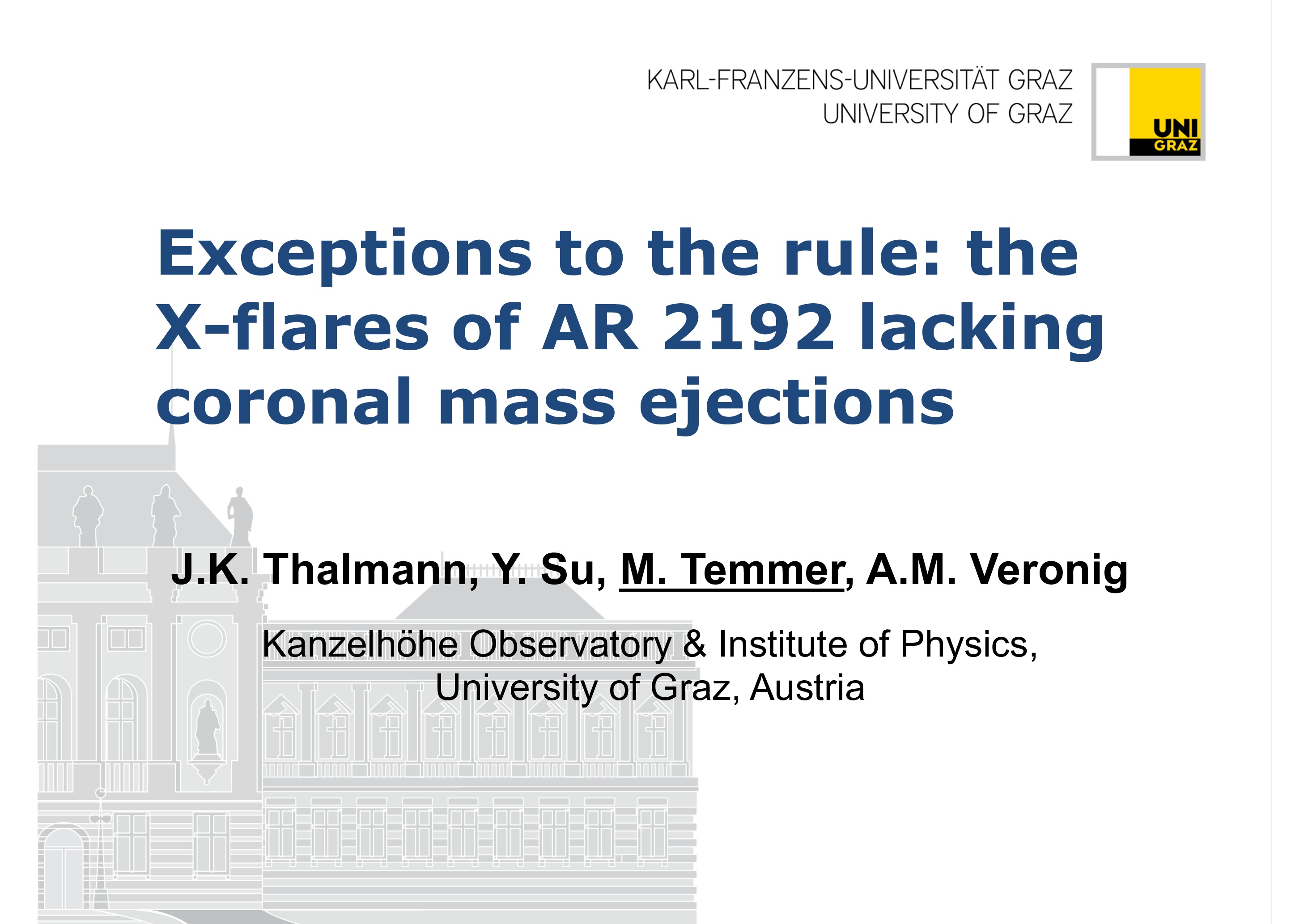Date of upload:
09.10.2015
Abstract:
The unusually large NOAA active region (AR) 2192, observed in October and November 2014, was outstanding in its productivity of major flares (GOES class M5 and larger). However, none of the X-flares was associated to a coronal mass ejection. The AR showed a predominantly north-south oriented magnetic system of arcade fields, which served as a strong, also lateral, confinement for the flares at the core of the active region. The large initial separation of the flare ribbons, together with an almost absent growth in ribbon separation suggests a confined reconnection site high up in the corona. Based on a detailed analysis of the confined X1.6 flare of Oct 22, we show how exceptional the flaring of this AR was. We find evidence for repeated energy release, presumably due to magnetic reconnection in a narrow flaring volume, closely associated to the location of hard X-ray sources. We demonstrate that a considerable portion of the magnetic energy released during the X-flare was consumed by the non-thermal flare energy.
